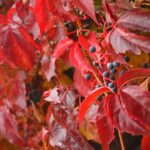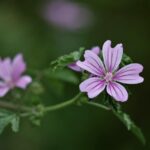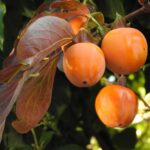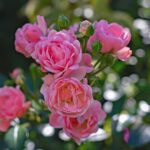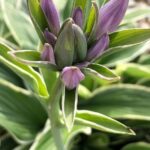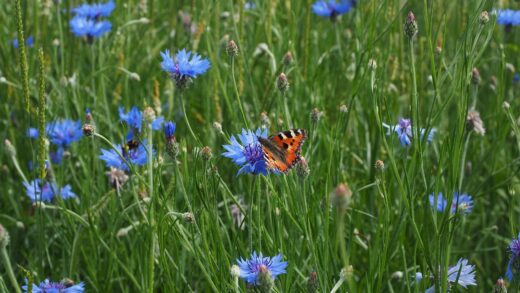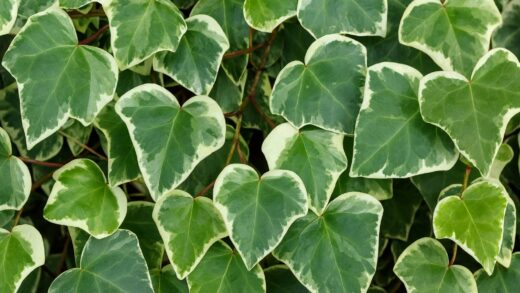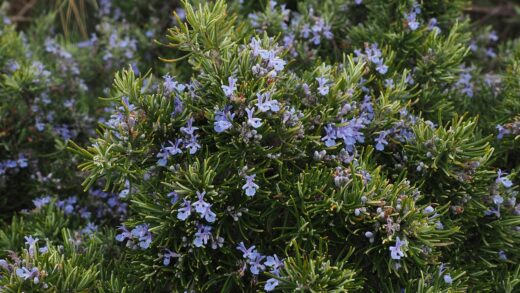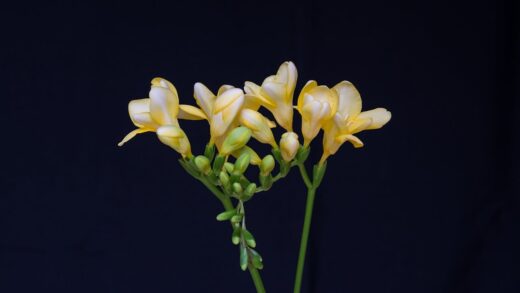Freesia, this enchanting flower native to South Africa, with its captivating fragrance and vibrant array of colors, has already won the hearts of many garden enthusiasts. It’s no wonder, as its graceful appearance and intense aroma make it equally attractive in gardens and as a cut flower in vases. Successful cultivation, however, requires a degree of care and expertise, but with the right knowledge, anyone can delight in the beauty of their own freesias. In this article, we will thoroughly explore all the important steps of planting and propagating freesias, so that even novice gardeners can confidently embark on growing this wonderful plant.
Introduction and Botanical Characteristics of Freesias
Freesias belong to the Iridaceae family, and their native habitat is in the southern part of Africa, particularly the Cape Province. The Mediterranean-type climate of these regions – with mild, rainy winters and hot, dry summers – is crucial for the plant’s natural life cycle, a factor worth considering during cultivation. Freesias are herbaceous perennials that typically grow to a height of 30-40 cm, with narrow, sword-shaped leaves pTMHЕnglish: originating directly from the underground corm. Understanding these basic botanical features makes it easier to provide them with optimal growing conditions.
The main allure of the freesia undoubtedly lies in its inflorescence, which forms a one-sided spike, gracefully arching at the top of the stem. The funnel-shaped flowers display an exceptionally wide spectrum of colors, from white, yellow, orange, pink, and red, to purple and various shades of blue; indeed, bicolored or variegated varieties are also common. Many cultivars exude an intense, sweet, citrusy fragrance, which is one of the primary reasons for their popularity, especially in the cut flower market. Their blooming period typically falls in spring or summer, depending on the cultivation method and timing.
The underground part of the plant is a corm. This storage organ provides the plant with the necessary nutrients for sprouting and flowering, as well as for surviving unfavorable periods. Each year, a new corm develops on top of the old one, while the old corm is depleted and shrivels. Around this new corm, smaller cormels often form, which are the basis for vegetative propagation. It is important to distinguish them from true bulbs, as corms are of stem origin, whereas bulbs are composed of modified leaves.
Numerous freesia species and a multitude of cultivated hybrids exist, differing primarily in flower size, color, fragrance intensity, and stem strength. The most commonly cultivated hybrids are generally known under the collective name Freesia x hybrida, originating from crosses of several wild species. For example, double-flowered varieties are popular, offering a fuller appearance, although their fragrance may sometimes be less intense than that of their single-flowered counterparts. Breeding work is continuously ongoing to create new, more resistant varieties with unique colors and stronger scents.
More articles on this topic
Creating Ideal Planting Conditions
One of the keys to successful freesia cultivation is ensuring adequate light conditions. These plants are notably light-loving, so a spot in the garden should be chosen where they will receive at least six hours of direct sunlight daily. Abundant sunlight is essential for profuse flowering and the development of strong stems. In shadier locations, plants may become leggy and weaker, and flowering may be less spectacular or even absent. Even when grown indoors or in a greenhouse, maximum light exposure must be ensured.
Soil quality is also a pivotal point for successful freesia cultivation. The most important aspect is good water drainage, as stagnant water can lead to corm rot. Loose, sandy-loam soil that is rich in nutrients is ideal for them. The soil pH should be neutral or slightly acidic, approximately between 6.0 and 7.0. If the garden soil is too heavy and clayey, it is advisable to improve it by adding sand, perlite, or mature compost to optimize its structure and drainage.
Regarding temperature requirements, freesias prefer a moderately warm climate. During the growing season, the optimal daytime temperature is around 16-20°C (60-68°F), while at night it can be a few degrees cooler. It is important to know that freesia corms are not frost-hardy, so in areas where frost is expected in winter, the corms must be lifted in autumn and stored in a frost-free place. Greenhouse or conservatory cultivation makes it easier to control the temperature, even allowing for winter or early spring flowering.
Water supply should be consistent during the growing season, especially from sprouting until the end of flowering. The soil should be kept moderately moist, but overwatering and complete soil dryness should be avoided. It is best to water less frequently but more thoroughly, allowing the water to penetrate deeper into the soil. After flowering, when the leaves begin to yellow and die back, watering should be gradually reduced to allow the corms to mature and prepare for their dormant period.
More articles on this topic
Preparing and Planting Freesia Corms
The first step in freesia cultivation is to obtain good quality, healthy corms. When purchasing, ensure the corms are firm, undamaged, and show no signs of rot or mold. It is advisable to source planting material from reputable garden centers or specialized corm growers. Larger corms generally produce more flowers, so it is preferable to choose these for a more abundant bloom. Healthy starting material fundamentally determines the success of cultivation.
The timing of planting depends on when you want to enjoy the flowers and the climatic conditions under which you are growing them. For outdoor planting, spring planting is most common, after the last frosts have passed, in April-May, with flowering expected in summer or early autumn. In milder winter areas or in a greenhouse, autumn planting is also possible, resulting in early spring flowering. Some growers pre-chill the corms for a few weeks in a cool place (around 10-13°C or 50-55°F) before planting; this so-called “cold treatment” can promote more uniform sprouting and more abundant flowering.
Corms should be planted about 5-8 cm (2-3 inches) deep and 8-10 cm (3-4 inches) apart. It is important that the pointed end of the corm always faces upwards, as this is where the leaves and flower stalk will emerge. Correct planting depth and spacing ensure plant stability, sufficient space for root and corm development, and good air circulation, which helps prevent fungal diseases. Planting too shallowly can cause plants to topple, while planting too deeply can delay sprouting.
The planting process is straightforward: dig holes of appropriate depth or a shallow trench in carefully prepared, loosened soil. Place the corms in the holes with their pointed ends up, then gently cover them with soil and lightly firm the soil around them. After planting, water the area thoroughly to help the soil settle around the corms and promote rooting. Applying a thin layer of mulch (e.g., compost, pine bark) can help retain soil moisture and suppress weeds.
Caring for Freesias During the Growing Season
Freesias appreciate regular feeding during the growing season. After sprouting, when the plants begin active growth, it is advisable to water them every two to three weeks with a balanced liquid fertilizer. When the flower buds begin to appear, switch to a fertilizer with a higher potassium content, which promotes abundant flowering and vibrant colors. However, it is important not to over-fertilize, as too much nitrogen can result in excessive foliage growth at the expense of flowers.
Especially with taller, large-flowered varieties, the flower stalks may bend or even break under the weight of the flowers. To prevent this, it is advisable to provide support for the plants in a timely manner. This can be a thin bamboo cane to which the stem is gently tied, or special plant support grids or rings. The support should preferably be put in place early in the plant’s growth to avoid damaging the roots or developing shoots later on. This is particularly important if the freesias are intended for cut flowers.
Freesias can occasionally be attacked by various pests, such as aphids, spider mites, or thrips, as well as fungal diseases, especially corm and root rot if the soil is too wet. To prevent issues, it is important to ensure good air circulation, avoid overwatering, and use healthy planting material. If pests appear, first try biological control methods, such as insecticidal soaps or introducing beneficial insects (e.g., ladybugs). In case of a severe infestation, targeted pesticides may be necessary.
Regular removal of spent flowers, known as deadheading, is beneficial for several reasons. Firstly, it makes the plant look tidier, and secondly, it prevents seed formation, allowing the plant to direct its energy towards developing more flowers or strengthening the corm. After the flowering period ends, allow the foliage to die back naturally. This process is essential as the nutrients produced in the leaves migrate back into the corm, providing its nutrient reserves for the following year’s growth.
Propagating Freesias
The most common and simplest method of propagating freesias is vegetative propagation using cormels, also known as offsets. By the end of the growing season, several new corms of various sizes form around the mother corm. These cormels can be carefully separated from the mother corm after the foliage has completely died back, when lifting the corms. Larger cormels can flower as early as the following year, while smaller ones may need one or two years to reach flowering size. This method ensures that the offspring are genetically identical to the parent plant.
In areas where winter frosts threaten the corms, they must be lifted in autumn after the foliage has withered. Gently clean the lifted corms of soil, then leave them to dry for a few days in a dry, airy place. Subsequently, the corms should be stored in a cool (around 8-10°C or 46-50°F), dark, dry, and well-ventilated place until spring replanting. A paper bag, mesh bag, or a crate filled with peat moss, sawdust, or vermiculite is perfectly suitable for this purpose to prevent the corms from drying out or molding.
Freesias can also be propagated from seed, although this method is more time-consuming and requires more patience than propagation by corms. Seeds should be sown in spring or early autumn in a well-draining, loose sowing medium. Germination typically requires a temperature of around 18-21°C (64-70°F) and a constantly slightly moist medium. Seedlings usually emerge within a few weeks, but plants grown from seed generally need 2-3 years to reach flowering age. This method is primarily considered for breeding new varieties or producing a larger quantity of plants.
Seed propagation has its own challenges and advantages. It is important to know that plants grown from the seeds of hybrid varieties do not necessarily inherit parental traits, so the color, shape, or fragrance of the flowers may differ. This provides an opportunity to discover new, unique variations, but if you want to preserve a specific variety, vegetative propagation (with cormels) is the more reliable path. Seed sowing is therefore recommended more for experimentally-minded gardeners or plant breeders who are happy to embark on a longer-term project.
Freesias as Cut Flowers and Other Interesting Facts
Freesias are popularly grown as cut flowers, thanks to their wonderful fragrance and longevity. The flower stalks are best cut when the bottom one or two florets have opened, and the other buds are still closed but already showing color. Cut the stems with a sharp knife or pruning shears early in the morning when the plants are still full of moisture. Immediately place the cut stems in lukewarm water to prevent air bubbles from entering the stem, which would hinder water uptake.
The vase life of freesias can be extended with a few simple practices. Always use a clean vase and fresh water, to which a floral preservative can be added. Re-cut the stem ends પાણી હેઠળ diagonally every day or two to ensure continuous water uptake. Also, change the water regularly and remove any leaves that would fall below the waterline, as these can initiate rot. Do not place the vase in direct sunlight, near a heat source, or next to ripening fruit, as ethylene gas accelerates flower wilting.
The freesia stands out not only for its beauty but also for its symbolic meaning. It is often given as a symbol of innocence, friendship, thoughtfulness, and trust. Different colors are also associated with different meanings; for example, white freesias can symbolize purity and innocence, while yellow ones can represent joy and friendship. Due to its distinctive, sweet, slightly spicy fragrance, it is also a popular ingredient in the perfume industry; freesia essence is found in numerous fragrances, lending them freshness and elegance.
In garden design, freesias can be used versatilely. They can be planted in flower bed borders, where their shorter stature and vibrant colors can create a beautiful contrast with other perennials or annual flowers. They are also excellently suited for container growing, so their fragrance and beauty can be enjoyed on terraces and balconies. If grown specifically for cut flowers, it is advisable to create a dedicated “cutting garden” for them, where the flowers are easily accessible. When companion planting, consider plants with similar light and water requirements to create a harmonious and easy-to-maintain composition.


